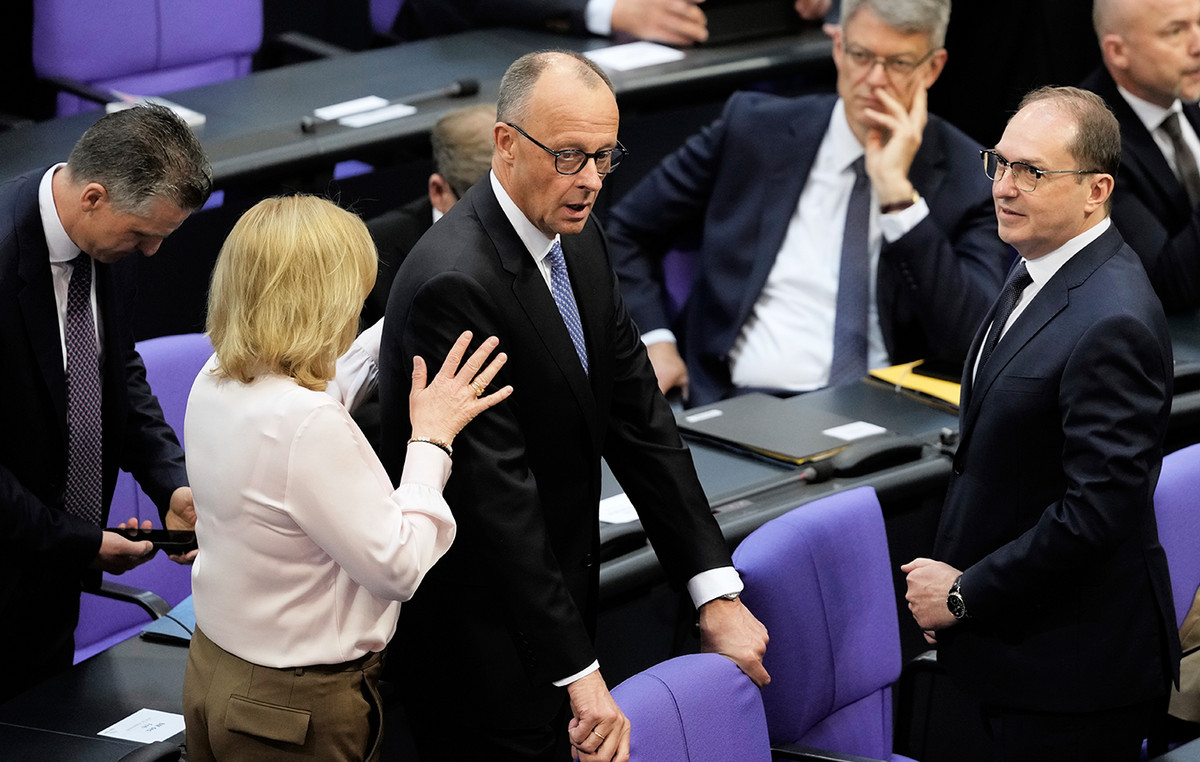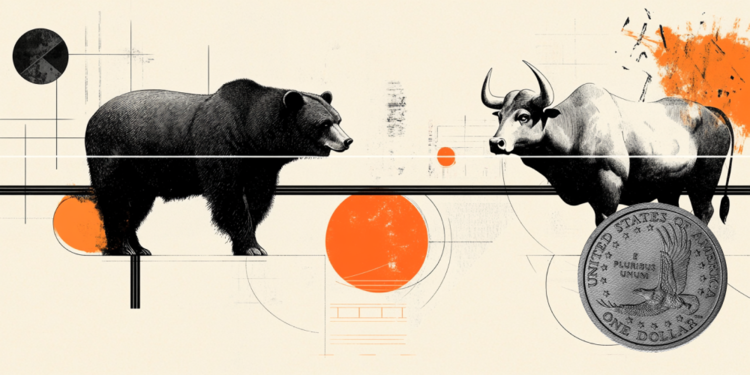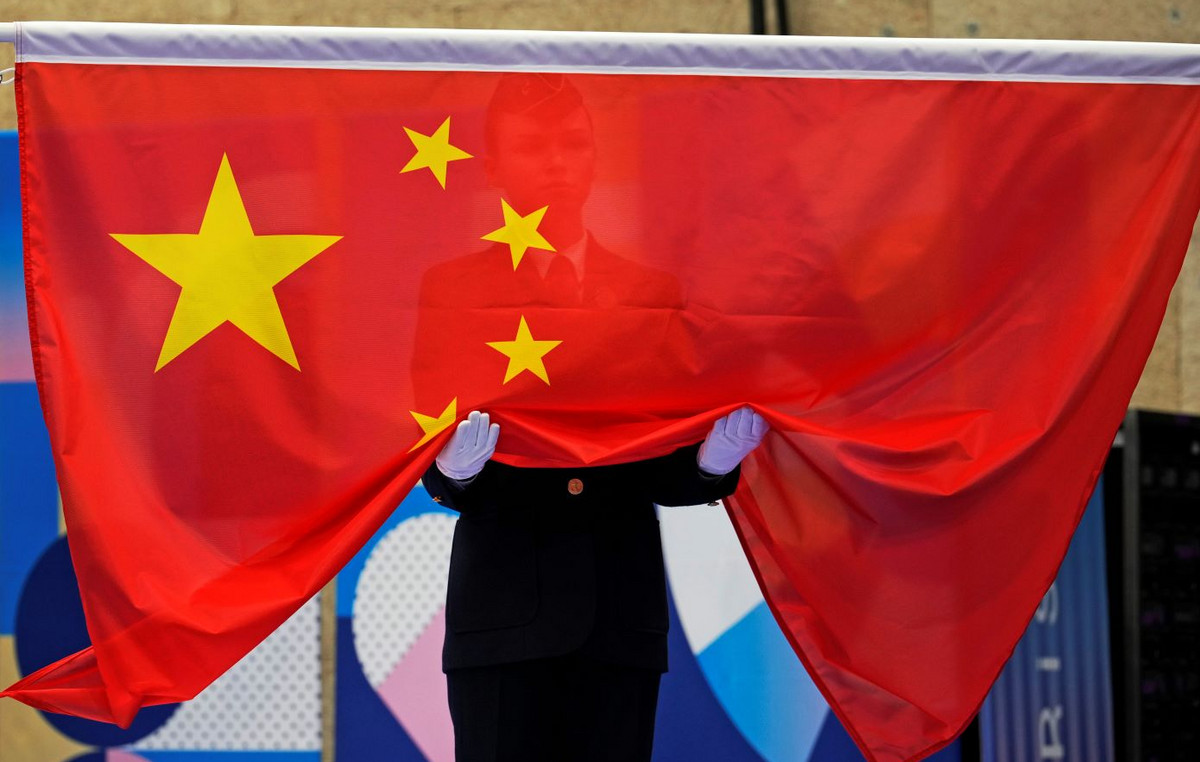The first contraction of business activity in the United States in two years can take the Federal Reserve to be more moderate in the current cycle of interest rate hikes, according to experts.
Released this Friday (22), the composite Purchasing Managers Index (PMI), which combines data from services and industry, recorded 47.5 points in July below investor projections, around 52 points.
In June, the composite PMI was 52.3. A value below 50 indicates contraction of activity. The negative performance in the month was caused by the contraction of the PMI from services , which recorded 47 points. already the industrial had 52.3, still indicating acceleration.
The result brought the first contraction in the composite PMI since May 2020, when the economy was affected by the pandemic . Surprised, the market began revising projections for the US economy, including interest rates.
Lower interest?
The negative result in July is linked to low consumer confidence in the economy, having to deal with rising interest rates, record inflation and expectation of a recession says André Perfeito, chief economist at Necton.
After the PMI result, the market’s view became that “with the weaker activity, maybe interest rates don’t need to go up as much, so the market reacted expecting lower rates now”.
Shortly after the release of the data, the market revised its forecasts for the next rate hikes by the Federal Reserve.
The CME Group points out that, compared to seven days ago, bets on a 0.75 percentage point increase at next week’s meeting rose to 78.7% from 72.1%, with a drop in the number of investors expecting a rise. of 1 pp
The vision of a more moderate interest rate cycle also gained space for the September meeting – with a rise of 0.5 pp becoming the majority bet -, as well as for the meetings in November and in 2023. In other words, the market expects a lower terminal interest rate.
According to Étore Sanchez, chief economist at Ativa Investimentos, the PMI July “suggests a greater likelihood of recession in the United States, and this reduces the pressure for a more austere interest rate cycle”.
The logic is that a stronger economy has greater inflationary pressure from demand, requiring more interest rate hikes to combat rising prices.
If the economy is weaker, inflation tends to be lower due to the drop in demand, allowing the Fed to raise interest rates less, also to avoid excessively slowing the economy.
The view spread through the market, but Sanchez points out that the PMI is just an indicator, and it measures the sentiment of companies about the economy, not being “the great predecessor of the crisis”.
“This is just one piece of data that leads in that direction, and many more are needed in the coming months for this to be confirmed,” he says.
The composite PMI in the United States does not usually have such a strong correlation with Gross Domestic Product (GDP ) as for its European version, but even so, the result is an “important sign”, according to Débora Nogueira, chief economist at Tenax Capital.
“If there is even a faster and more intense deceleration, then the pace of monetary tightening may become more moderate”, he assesses.
However, service inflation in the United States, which is more inertial and takes time to recede, is still “very high”, which should force the Fed to raise interest rates for some time to contain it.
The economist still expects the Fed to follow suit and raise interest rates by 0.75 pp next week. For the next meetings, it will be important to observe the data that will be released, and that can confirm, or not, the indication of the composite PMI.
“If there is even more evidence of a slowdown in the next 45 days, making it clear that activity has changed pace, then we have to think about a moderation in the interest rate adjustment”, he says.
Effects in Brazil
A weaker economy in the United States, and a more moderate interest rate cycle, tends to affect mainly the Brazilian exchange rate.
For Perfect, lower interest rates in the world’s largest economy imply lower interest rates in Brazil, since the central bank would not need to raise rates much more to increase the distance between countries’ interest rates.
In this process, the tendency is that the dollar decline due to the North American market becoming less attractive, even with occasional increases due to an aversion to risks on the part of investors due to the global recession scenario.
Nogueira points out that the real has also been devalued due to the combination of a worsening economy in China and an increase in the perception of risk in Brazil due to tax issues .
“If the American deceleration occurs sooner, it will be a challenging scenario, since Brazilian activity will feel and will be a little weaker”, he evaluates.
The economist considers that an increase in risk aversion due to the recession will still tend to harm Brazil, which may make the downward movement in inflation more uncertain with a exchange depreciated.
At the same time, a recession in the United States is likely to lead to weaker economic activity in Brazil, according to Sanchez.
“On the other hand, if this slowdown in US activity culminates in a drop in inflation, we will also benefit, and there is the possibility of a faster-than-expected interest rate reversal,” he points out.
Source: CNN Brasil
I am Sophia william, author of World Stock Market. I have a degree in journalism from the University of Missouri and I have worked as a reporter for several news websites. I have a passion for writing and informing people about the latest news and events happening in the world. I strive to be accurate and unbiased in my reporting, and I hope to provide readers with valuable information that they can use to make informed decisions.







